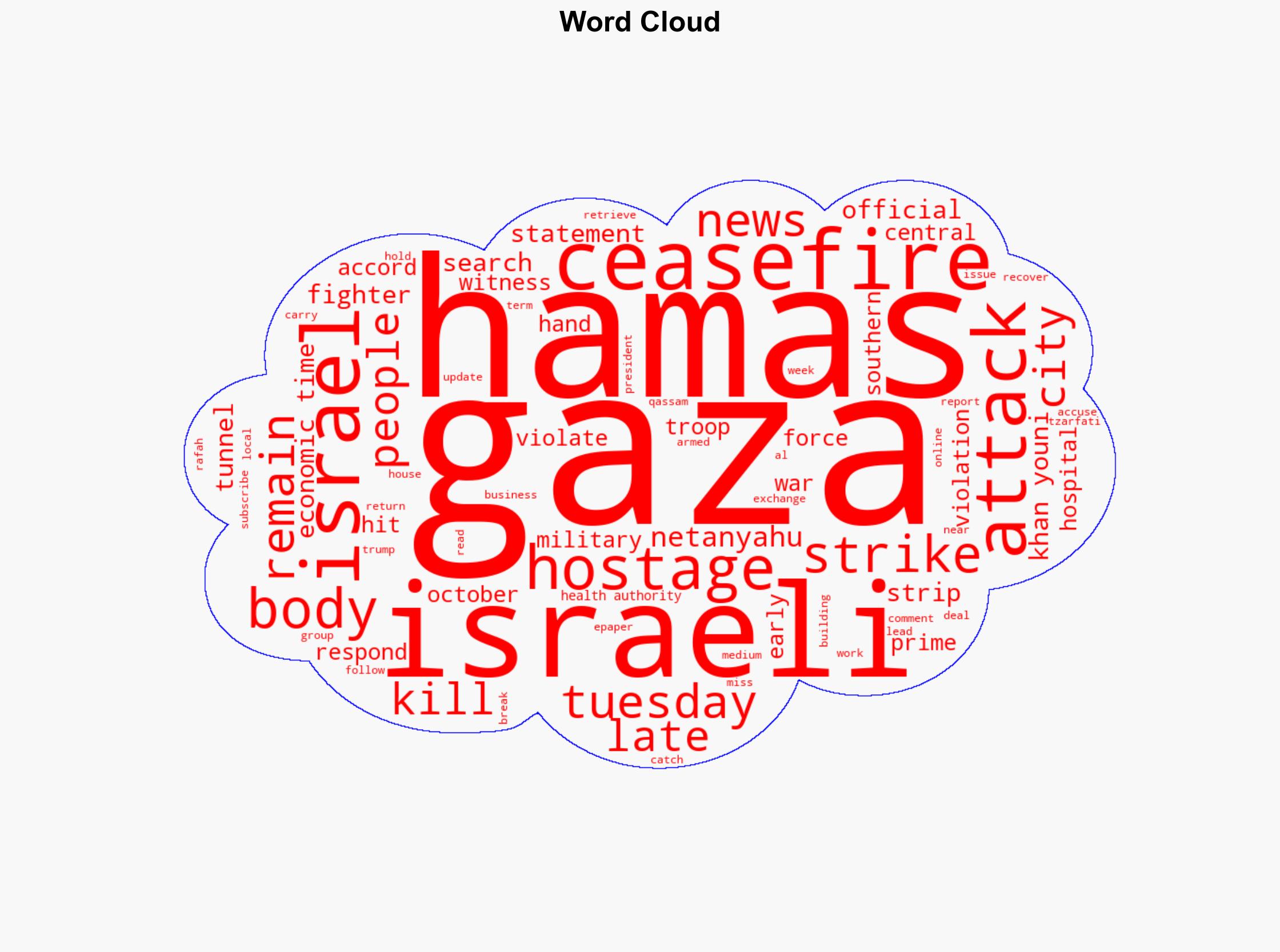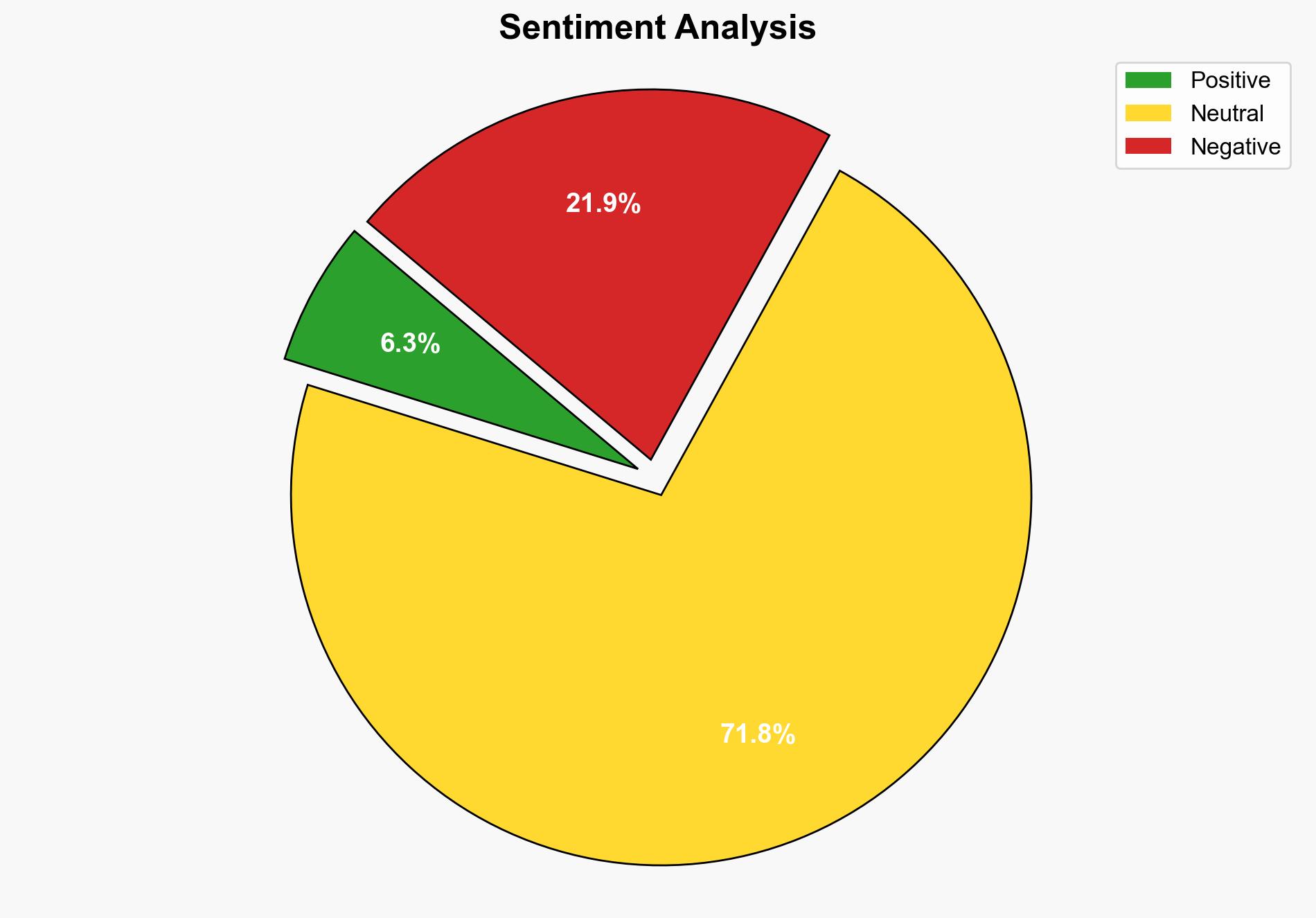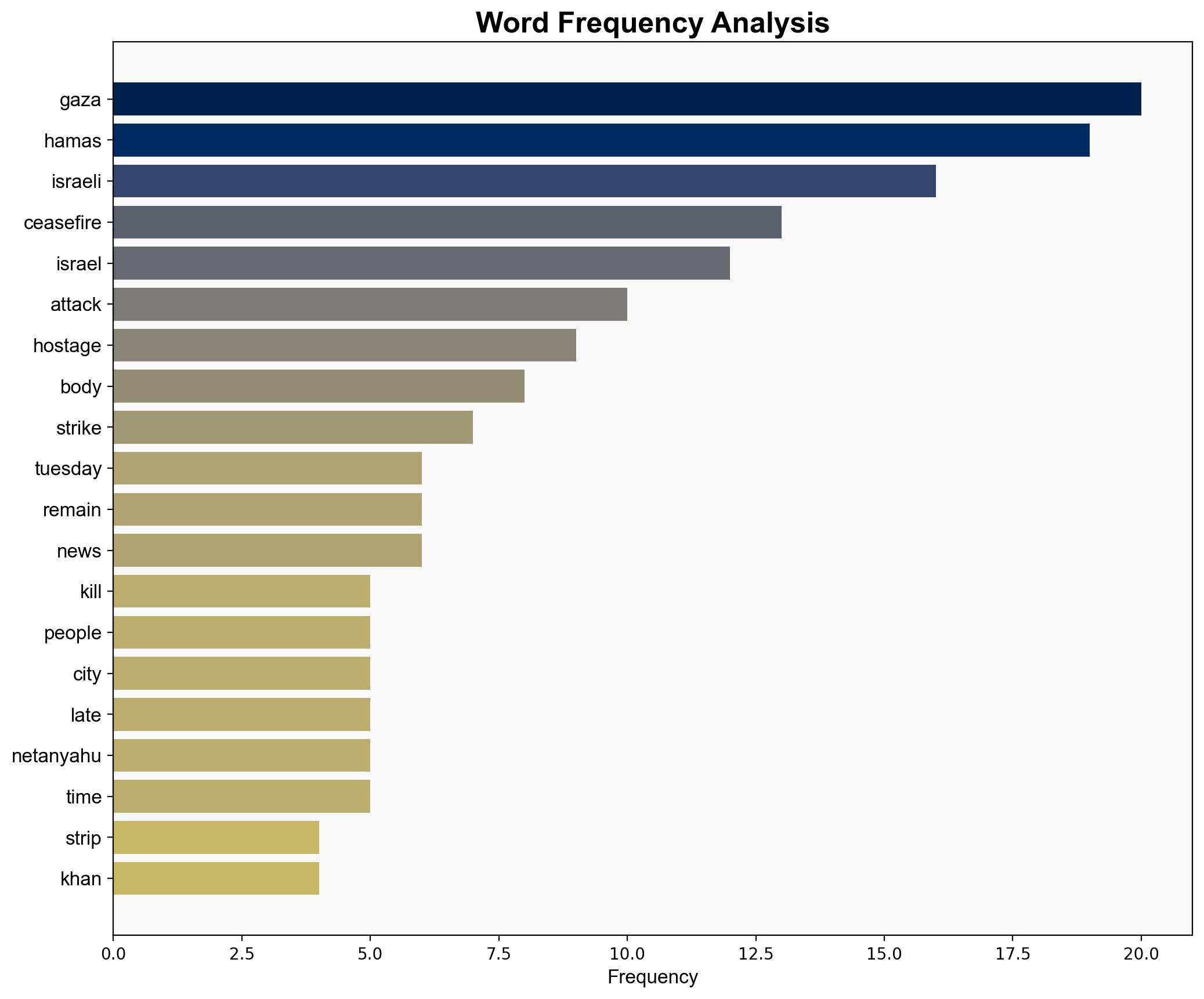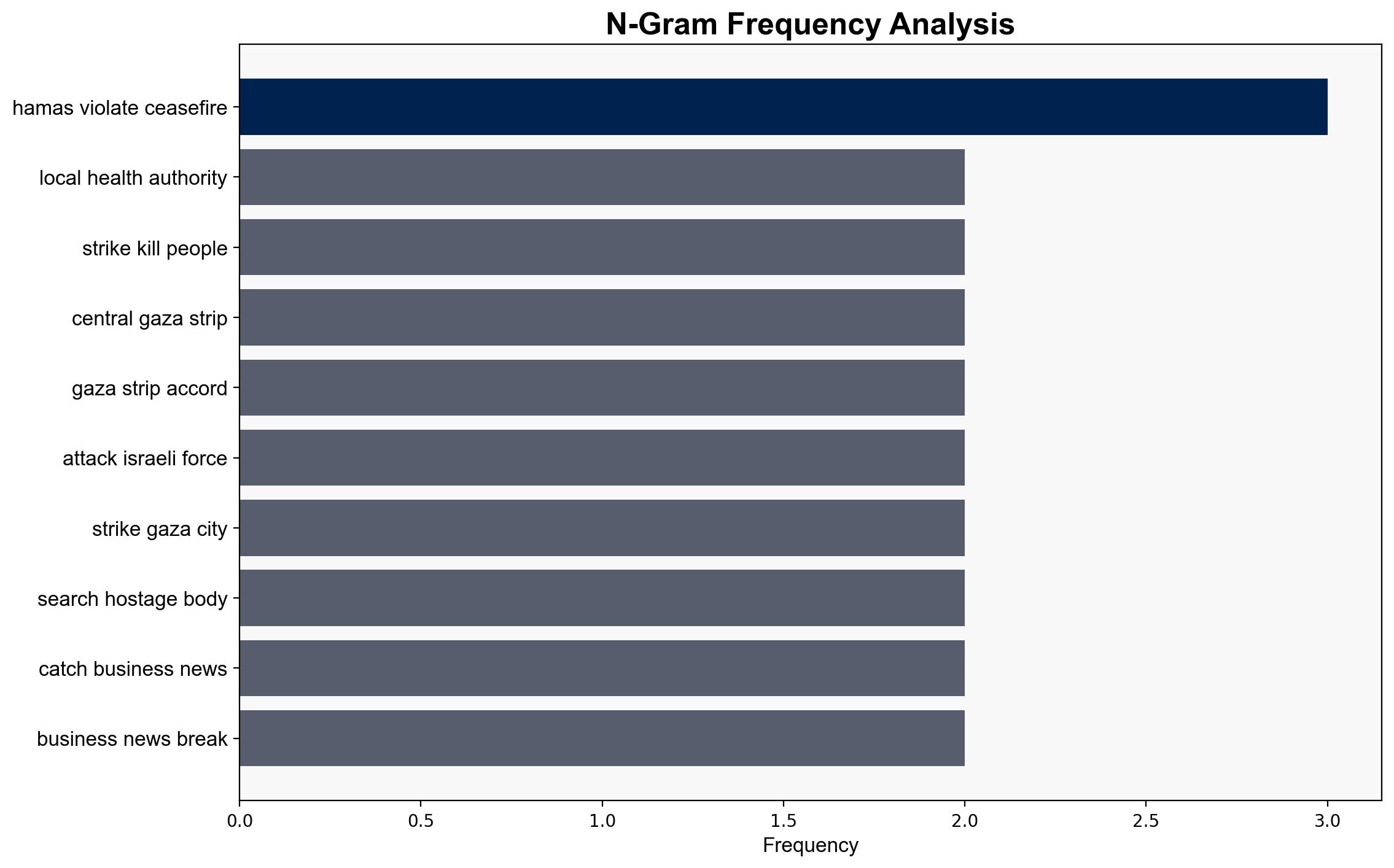Israel strikes Gaza after accusing Hamas of violating US-brokered ceasefire – The Times of India
Published on: 2025-10-29
Intelligence Report: Israel strikes Gaza after accusing Hamas of violating US-brokered ceasefire – The Times of India
1. BLUF (Bottom Line Up Front)
The most supported hypothesis is that Israel’s military action in Gaza is a response to perceived violations of the ceasefire by Hamas, potentially as a preemptive measure to deter further attacks. Confidence level: Moderate. Recommended action: Engage in diplomatic efforts to reinforce the ceasefire terms and establish a monitoring mechanism to verify compliance by both parties.
2. Competing Hypotheses
1. **Hypothesis 1**: Israel’s strikes are a direct response to Hamas violating the ceasefire, as claimed by Israeli officials. This hypothesis is supported by reports of exchanges of fire and accusations from Israel regarding Hamas’s actions.
2. **Hypothesis 2**: Israel’s strikes are a strategic move to pressure Hamas into compliance with broader terms of the ceasefire, possibly related to hostage negotiations and prisoner exchanges. This is suggested by the timing of the strikes following stalled negotiations and the recovery of bodies.
Using ACH 2.0, Hypothesis 1 is better supported due to the direct correlation between reported incidents of violence and Israel’s immediate military response. Hypothesis 2, while plausible, relies more on inferred motivations and lacks direct evidence.
3. Key Assumptions and Red Flags
– **Assumptions**: It is assumed that both parties are acting in good faith regarding the ceasefire terms. There is also an assumption that reported incidents of violence are accurately attributed to Hamas.
– **Red Flags**: The denial by Hamas of responsibility for attacks and the lack of independent verification of events raise questions about the accuracy of the claims. The potential for cognitive bias exists if information is selectively interpreted to support pre-existing narratives.
4. Implications and Strategic Risks
The continuation of hostilities risks escalating into a broader conflict, undermining regional stability. The economic impact on Gaza could worsen humanitarian conditions, potentially fueling further unrest. There is also a risk of international diplomatic fallout, particularly if civilian casualties increase.
5. Recommendations and Outlook
- Initiate a third-party monitoring mechanism to verify ceasefire compliance and reduce misinformation risks.
- Facilitate dialogue between Israel and Hamas to address underlying issues, including prisoner exchanges and humanitarian access.
- Scenario Projections:
- Best: Ceasefire holds with international mediation, leading to reduced hostilities.
- Worst: Escalation into full-scale conflict, drawing in regional actors.
- Most Likely: Continued sporadic violence with intermittent diplomatic interventions.
6. Key Individuals and Entities
– Benjamin Netanyahu
– JD Vance
– Ofir Tzarfati
– Amiram Cooper
– Sahar Baruch
– Al Qassam Brigade
7. Thematic Tags
national security threats, counter-terrorism, regional focus




